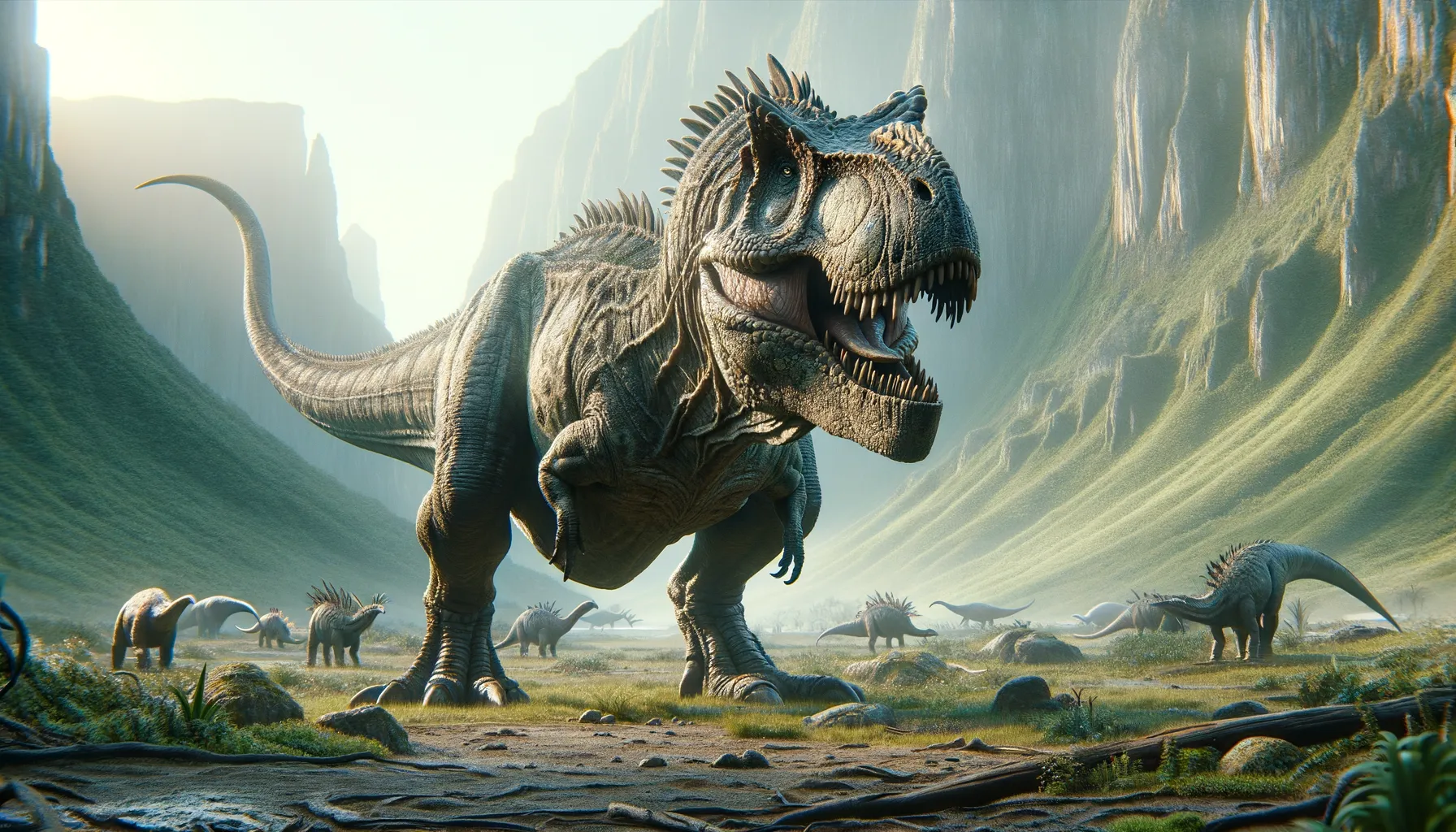
Magulodon
An apex predator of the ancient world.
Period
Cretaceous
Length
Around 10 meters long.
Height
About 4 meters tall.
Weight
Roughly 5,000 kilograms.
Magulodon was a massive and formidable dinosaur that roamed the Earth during the Cretaceous period. With its powerful build and impressive size, it was an apex predator of its time. Though details of its appearance remain largely speculative, its massive jaws and strong legs suggest a creature well-suited for hunting and long-distance travel in search of prey.
Diet
Magulodon was primarily carnivorous, feeding on a variety of smaller dinosaurs and large herbivores. Its strong jaws and sharp teeth made it effective at tearing through the flesh of its prey.
Hunting
Hunting strategies likely involved patience and ambush, using its environment to conceal itself before striking. Pack behavior is hypothesized, allowing it to take down larger prey with coordinated attacks.
Environmental challenges
Magulodon faced significant environmental challenges, including climate fluctuations and competition for resources. Periodic volcanic activity may have disrupted its habitat, forcing adaptations in its diet and hunting patterns. Additionally, shifts in vegetation altered the availability of prey, requiring strategic adaptability for survival.
Speed
Moderate speed due to its size.
Lifespan
Approximately 70 to 80 years.
First discovery
Discovered in the 1970s in Central Asia.
Fun Facts
- Magulodon is a fictional dinosaur name, as no scientific evidence of such a dinosaur has been found.
- The name 'Magulodon' suggests a large or majestic tooth, hinting it might be a formidable creature.
- While Magulodon isn't real, it sparks the imagination about what kind of environment it might have lived in if it were.
- Imagining a Magulodon offers a fun exploration into how paleontologists name new dinosaur species based on fossil characteristics.
- Magulodon could potentially inspire creative writing, movies, or games about dinosaurs.
- The concept of Magulodon helps illustrate the ongoing nature of paleontology, where new discoveries can be made at any time.
- Speculating about Magulodon highlights the wonders of the prehistoric world and how much is still uncovered.
Growth and Development
Young Magulodons grew rapidly, attaining substantial size within several years to avoid predation. Fossil evidence suggests growth spurts during the juvenile phase, followed by slower development as they approached full maturity. This growth pattern indicates a complex life cycle with varying resource needs at different stages.
Habitat
Magulodon thrived in diverse environments ranging from dense forests to open plains. Its adaptability allowed it to exploit different ecological niches, ensuring its survival across vast territories. Proximity to water sources was crucial, providing hydration and attracting potential prey.
Interaction with other species
As a dominant predator, Magulodon interacted predominantly through competition and predation rather than cooperation. Smaller species were often prey, while large herbivores were key targets. Symbiotic relationships were limited, but scavenging behaviors likely overlapped with other carnivores.
Natural lifespan
In optimal conditions, Magulodon would naturally live for several decades.
Reproduction
It's believed Magulodon reproduced via egg-laying, with nests likely built to shield offspring from predators. Parental care might have involved guarding and possibly feeding young directly post-hatching. Clutch sizes are speculative but inferred to support multiple offspring due to predation risks.
Social behaviour
Social behavior remains speculative, but evidence suggests potential for pack-like structures during hunting. Communication might have included vocalizations and posturing, helping to coordinate activities and establish dominance hierarchies within groups.
Fossil locations
Fossils of Magulodon have been found mainly in Central Asia, particularly in regions that were once lush landscapes. These sites provide significant insight into its biological and ecological characteristics during the late Cretaceous period.
